Live Food Storage For Renters and The Make-Shift Root Cellar

I have really fallen for the idea of "live" food storage. That is, food that is preserved without heating, canning, or extensive processing. I think it is just so easy and common sense that I don’t understand why it isn’t more widely used.
But we rent. So while our dream of a large root cellar all our own hasn’t quite come true yet, we are using our resources as best we can and attempting some live storage all our own.
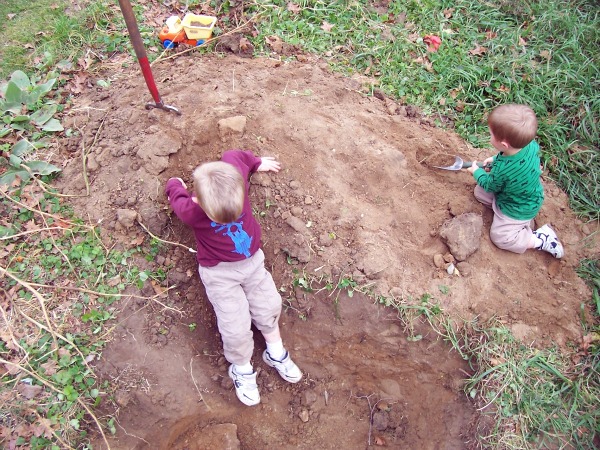
First there are the lacto-fermented vegetables. Yeah, they are taking up a lot of refrigerator space, but they are also a product of a lot of time and energy spent over the summer to ensure we will have some enzymes and probiotics with our dark days meals.
Then there is the spare bedroom – part office, part walk-in pantry. I store a lot of canned, bulk, and dried goods in this room. The room is left unheated so it is good for storing the bushel of onions from the farmer’s market, the many heads of garlic harvested from our garden, the vast collection of winter squash I have acquired, and three bags of potatoes and turnips.
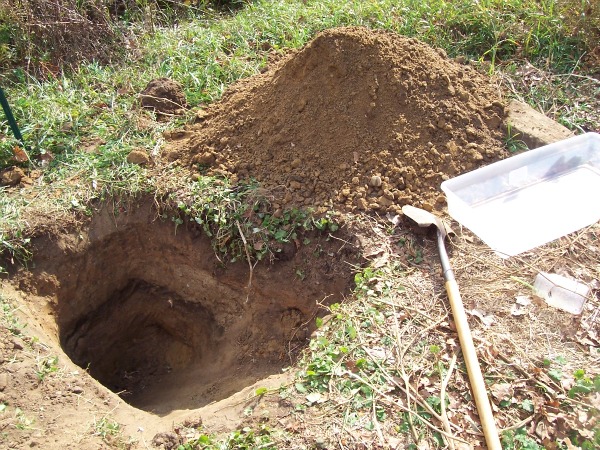
That extra room has really helped, but it isn’t great insurance that our potatoes or turnips will be kept cool enough. So we have started exploring mini root cellars. At it’s most basic you dig a hole, fill it with root vegetables, and then cover to protect from critters and the elements. There are three main concerns to keep in mind when digging your root cellar:
- Keep Them Cool. Knowing how deep you need to dig to keep your produce below the frost line is key. They need to be kept cold, but not freezing. A quick google search should tell you how deep the frost will go in your area.
- Keep Them Dry. Most vegetables like lower humidity for storage. While you definitely want air flow between your food items, you do not want your hole to fill with water when the rain hits. A tarp or the lid to a rubbermaid storage container would be effective. Also, consider digging next to a slope so that the water has a place, other than your food storage, to go.
- Keep The Critters Out. This goes hand-in-hand with keeping them dry. You don’t want things crawling into this new living space and surprising you in January. Eek. So don’t make it easy for them to nest in your mini root cellar.
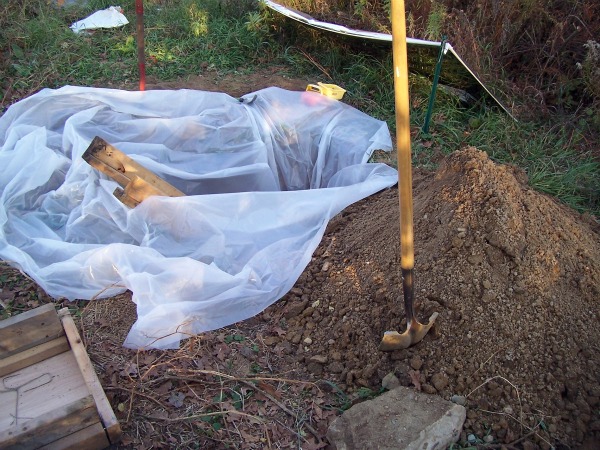
There are a myriad of ways to make this work. I like the idea of rubbermaid containers with holes for ventilation. My husband devised an interesting wooden frame that allows us to pull up a little bit of our potatoes at a time. I have read about people who simply dig the hole, throw in some potatoes, top with hay and leaves, and come back a few months later to beautifully fresh potatoes.
I would give you a tutorial on exactly how we did it, but… um… we’re not sure if it’s going to work yet. By the time we know it will be too late for you to get out there and dig your own. So, you can use these concepts to store up the last of the fall harvest and come back and tell me how you made it work. You know, just in case our method doesn’t pan out.
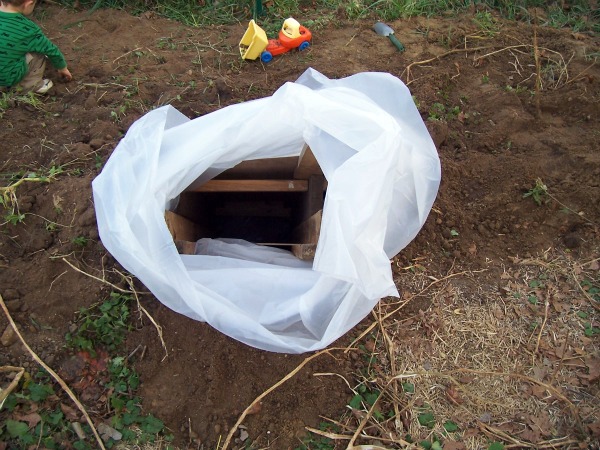
How are you storing food for the winter?

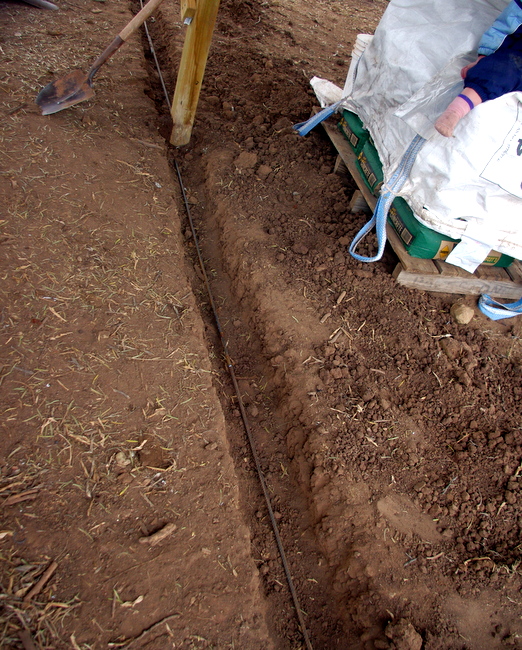
Okay, this is most interesting. I will be curious to see how it goes! My husband and I were just talking last night about stockpiling. Good timing on this.
Jamie Oliver in one of his At Home episodes showed how he stored root veg: in a box covered with sand. Now I just need to know if that would work in tropical parts of Australia (or any tropical part of the world, I suppose). I did find one forum topic discussing building root cellars in Australia, but they seemed to be in drier parts…
I live in a controlled neighborhood with an HOA, so, no hole digging, darn it. SO,,,,I put my storage apples in a cold closet last year and they did pretty good. This year I decided to use one of the window wells in our basement. The one I chose is on the north side of the house. The window well comes down into the ground about 4-5 feet from the surface in order to expose the large basement windows, let in light, give a quick way to escape in case of fire, etc. I took a styrafoam cooler, added a bunch of onions and squash, wrapped it in an old moving van quilt, than stuck it into a heavy duty plastic garbage bag. Closed it up, opened the window and set my handy “root cellar” where it will be close to the window. It has been getting down to about 31 degrees this week, so I am going to check today and make sure everything is OK. I put a thermometer in there so I can monitor the temp. I hope this is successful, because my house frig and my garage frig are both stuffed with fermented veggies and there is no room for other stuff.
How timely! I am just about to move from a small apartment with a little bit of storage in the ‘laundry room’ to an apartment with even less food storage. It will be interesting to see how we cope… but all wood floors! No more carpet!! And lower heating bills! And and and… well, I’m excited.
We have a bit of basement and have stored things well in the past. This fall we bought 100lbs of squash and it is now all gone (rotted) except for one. We always do this and I don’t know what went wrong (other than being a bit unseasonably warm but it is cool-ish and dry down there). I also used to store carrots in sawdust. They went bad too right away. It is getting cooler so I keep them and my bag of apples just outside my back door (it leads outside). I have turnips in sawdust, which seem to be faring better than the other things. It frustrates me because it worked so well before and I was planning on eating it for a while, not to mention we had nearly $5o in produce gone to waste between these and apples that went bad quickly (which will cost a lot more through the winter). *sigh*
@Carla, Oh yeah, I meant to say we have slotted racks we keep the squash on and turn them frequently so they don’t sit in one spot all the time. This is a good way to get vertical space somewhere small since they nearly reach the ceiling. I have an old pantry cupboard that I keep my preserves in and shelves built in the basement I keep my dry food storage on. It can be a pain living in an apartment with little space, but I like to make the most of what we have 🙂
I recently visited Old Sturbridge Village in Sturbridge, MA, which imitates life in the 1830s. The Freeman Farmhouse has large wooden boxes in the basement with lids. The boxes are approximately 2-1/2 to 3 feet square and are filled with sand. This is the way they used store their winter vegetables. I am thinking of doing this in our dirt floor cellar.
K
I’ve kept carrots in sand fairly well in our “Michigan basement”. It’s cold down there and through a small door, I can access actual dirt crawl space- this is where we keep our root cellar. The trick for keeping the carrots well for me was to remember to mist the layers of carrots and sand as I put them in a box and the most crucial part: to remember to mist the sand a couple times a week. Root cellars need some level of humidity (different veg needs different amounts). Last winter we had a new baby in the house and I was not at all good about misting the sand/carrot box. The result? Dried up, petrified carrots. While the sand can help preserve them, very dry sands wicks up any of the veg’s moisture leaving you with withered soon-to-be chicken food!
That said, the potatoes keep well enough. What worked best with those was to keep them in layers as opposed to a deeper box. I found that the cardboard trays we got while strawberry picking are perfect for this.
Onions did fine in bushel baskets.
Regardless of where you keep your “root cellar”, try to remember to check on it a couple times a week and remove any soft/moldy/withering items ASAP!
I’m late to the party here –just discovered your blog. We just moved a month ago and the new place has a garage that is quite cold. I was thinking of storing food in there and wonder if anyone has thoughts on this. We’re using it right now for refrigerator overflow and it’s working well but it will get a lot colder here by winter so I am thinking perhaps I should use the wall closest to the house to avoid things freezing. Or maybe they would be well enough protected anywhere in the garage (it’s a very large garage). Has anyone done this?
Hi. I was checking out your blog and came across this post about storing roots in a root cellar. Not long ago I came across an article on dirtdoctor.com about using peat moss to store roots. Here is the link. http://www.dirtdoctor.com/organic/garden/view_question/id/3688/
I realize this post is pretty old but I just found it on Pinterest and I was wondering if you have an update on how well it worked for you? I have been looking into different versions of root cellars and this one seems intriguing. Wonderful blog by the way I have enjoyed reading!
Melissa,
Wow, that is an old post! 🙂 If I recall correctly I think it actually did work fairly well. I think the biggest struggle was keeping the water out when it rained/snowed/snow melted. We kept potatoes and turnips in there for quite a while before they began to show signs of spoilage.